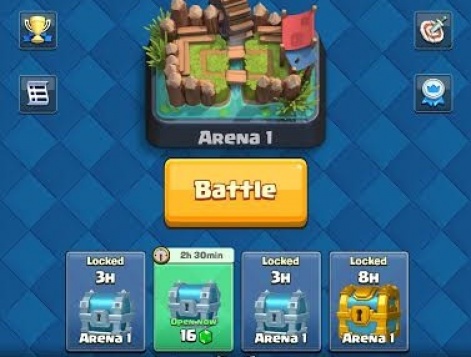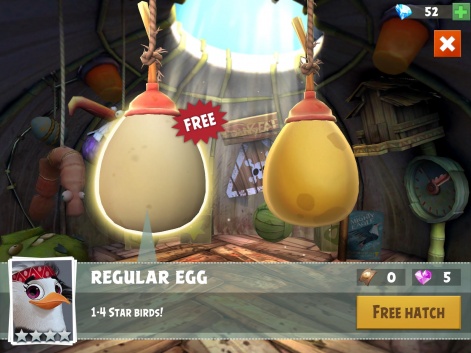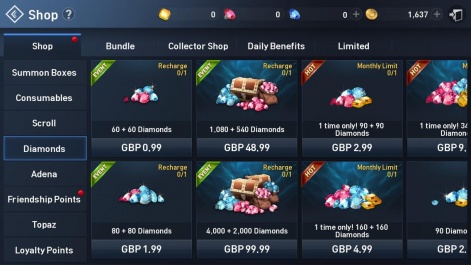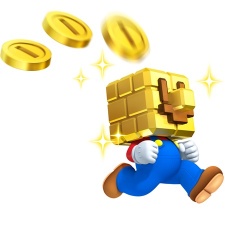So there goes 2017: another fascinating year for the mobile games industry.
Market intelligence firm Newzoo is forecasting yearly revenues of $50.4 billion from mobile games by the time the year is all wrapped up.
And with our weekly analysis of mobile game monetisation, The IAP Inspector, we've been looking at exactly how the leading free-to-play games are making their money.
But monetisation, like all other aspects of design, is a shifting thing. So what shape did it take this year?
The Royale standard
Whenever Supercell launches a mobile game, it sends ripples through the industry.
2016's Clash Royale was no different and 2017 was the year when its system of timed reward unlocks began to crop up over and over again.

We saw it in January with Netmarble's Star Wars: Force Arena, which effectively replicated the system wholesale with four slots filled with Victory Packs – free card rewards that unlock over a period of hours or can be opened immediately using hard currency.
We also saw very similar systems implemented in – among others – C.A.T.S, Power Rangers: Legacy Wars and Zombie Gunship: Survival.
It's a great system – arguably the smartest aspect of Clash Royale's design – which counters the harshness of strict energy gating while providing the same encouragement to spend.
East to West
As widely anticipated, 2017 was also a year in which traditionally Asian monetisation design elements continued to enter the Western mainstream.
Indeed, it felt particularly significant to see Rovio embracing both gacha and annuities in Angry Birds: Evolution, an RPG that took the series in a new direction.

Annuities are in-app purchases that usually offer considerably more currency or resources than is offered at the standard rate, but distributed over a period of time rather than all at once.
These cropped up in a number of games in 2017, including Rovio's new IP Battle Bay. That game also featured a premium subscription service – an option made possible by both Apple and Google at the end of 2016 – joining a handful of other titles experimenting with the model.
It's no coincidence that Nintendo's best-brossing mobile game featured gacha.
Elsewhere, Nintendo and DeNA – whose 'free-to-start' experiment with Super Mario Run was never destined to unsettle F2P – built Fire Emblem Heroes around a gacha system.
And it's no coincidence that it's consistently been Nintendo's best-grossing mobile title.
A quiet Revolution
It's unlikely to make the same noise in the West, but it would be amiss to write about the mobile game monetisation trends of 2017 without mentioning the game that, in a shorter time period than it took Pokemon GO to generate the same amount worldwide, made $100 million in South Korea.
That game is Lineage 2: Revolution, and like any game that's so phenomenally successful, there's no single factor that propelled it to the top.

It certainly did not make such eye-watering profits by following a trend. But successes of this magnitude don't go unnoticed, so the question is whether this will create its own ripple effect throughout 2018.
Is the MMO, still often associated with PC and the old subscription model, due a comeback on mobile?
Lineage 2: Revolution didn't reinvent the wheel monetisation-wise (it also includes a whole host of annuities), but neat touches such as its granular approach to login rewards – offering rewards at 10, 20, 40 and 60 minutes of daily play – will surely be seen again for games that demand greater time investment.
Launch, learn and adapt
Another emerging trend to watch in 2018 could be the approach pioneered by NetEase with its slate of PlayerUnknown's Battlegrounds-inspired games.
NetEase could fundamentally shake up the established order.
It may seem odd to feature these in a piece on monetisation trends, given that they launched with none to speak of, but this is precisely the point.
Knives Out in particular has done the business downloads-wise, clearing 100 million downloads in a month, and this community-building appears to be NetEase's primary focus for the games right now.
It's also exploring the esports angle with Rules of Survival, with a championship underway offering a total prize pool of $650,000.
The key will be, when monetisation is finally introduced, how the games perform. But assuming NetEase is currently learning important lessons from its community and fine-tuning accordingly, it could fundamentally shake up the established order of things.
New rules
Right at the end of the year, just this last week in fact, Apple has potentially shaken up the way developers monetise even further by requiring companies to display the probabilities of obtaining items through loot boxes or other similar mechanisms.
The precise wording covers loot boxes and “other mechanisms that provide randomised virtual items or purchase must disclose the odds of receiving each type of item to customers prior to purchase”.
It's a requirement that Japanese and Chinese developers are already facing and have been for some time. More transparency will be a good thing - though exactly what these new guidelines mean and how they'll be enforced is still up in the air - and developers will need to be extra careful with the odds they present to players.





















